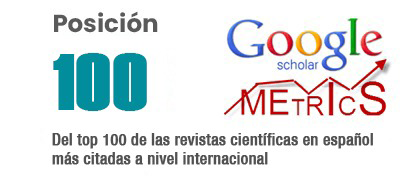Diagnosis of the cocoa production-consumption circuit in the Progreso Parish, El Oro province
DOI:
https://doi.org/10.62452/ebxk3803Keywords:
Marketing, economics of agriculture, value chainAbstract
Cocoa is one of the most important agricultural products worldwide, is a commodity associated with Republican of Ecuador, thanks to its production and marketing pillars of the economy were built between 1880 and 1915, based on these considerations was raised as an objective to characterize the circuit of production of cocoa in the parish of Progreso, Pasaje canton, province of El Oro, the research was conducted between the months of September to December 2019. The methodology used was a descriptive type for which a survey was conducted among cocoa producers, the sample was 127 producers, among the most relevant results is that producers in the parish of Progreso have achieved harvests of more than 2100 kilograms per year, 53% of producers surveyed have a hectare from 0 to 5 on their farms and 23% from 6 to 10, 70% of producers sell more than 8000 kilograms per year. More than 50% of the producers surveyed mentioned that they have increased their income which allows them to continue exploiting their cocoa plantations.
Downloads
References
Banco Central del Ecuador. (2017). Reporte de Coyuntura Sector Agropecuario. No. 89. https://contenido.bce.fin.ec/documentos/PublicacionesNotas/Catalogo/Encuestas/Coyuntura/Integradas/etc201604.pdf
Barrezueta-Unda, S., & Chabla-Carrillo, J. (2017). Agroeconomía Características sociales y económicas de la producción de cacao en la provincia El Oro. La Técnica, 17(3), 84–95.
Blare, T., & Useche, P. (2015). Is there a choice ? Choice experiment to determine the value men and women place on cacao agroforests in coastal Ecuador. International Forestry Review, 17(4), 46–60.
Castillo, J., Medina, A., Medina, D., Medina, Y., & El Assafirii, Y. (2019). “Modelo de Gestión Del Conocimiento Para El Cultivo de Cacao En Vinces. Ingeniería Industrial, 40(1), 48–58.
Centro de Comercio Internacional. (2018). Trade Map - Lista de Los Países Exportadores Para El Producto Seleccionado En 2018 (Cacao y Sus Preparaciones). https://www.trademap.org/(X(1)S(zxbh1w55ts35yu450bovv0e5))/tradestat/Country_SelProduct_TS.aspx?nvpm=3%7C%7C%7C%7C%7C30%7C%7C%7C2%7C1%7C1%7C1%7C2%7C1%7C2%7C1%7C1
Ecuador. Instituto Nacional de Estadísticas y Censos. (2019). Encuesta de Superficie y Producción Agropecuaria Continua. INEC. https://www.ecuadorencifras.gob.ec/documentos/web-inec/Estadisticas_agropecuarias/espac/espac-2018/Presentacion de principales resultados.pdf
Ecuador. Ministerio de Agricultura del Ecuador. (2018). Comercio Exterior, 2018. MAGAP.
Freire, M., & Alonso, O. (2016). Cadenas de Valor de Productos Agropecuarios En Seis Municipios de Cuba. I. Metodología Para Su Diseño. Pastos y Forrajes, 39 (2), 139–48.
Jiménez, J., Tuz, I., Quevedo, J., & García, R. (2018). Presecado: Su Efecto Sobre La Calidad Sensorial Del Licor de Cacao (Theobroma Cacao L.). Revista Científica Agrosistemas, 6(2), 63–73.
López, S., & Gil, A. (2017). Características Germinativas de Semillas de Theobroma Cacao L. (Malvaceae) ‘Cacao. Arnaldoa, 24 (2), 609–618.
Morales Intriago, F. L. (2013). Los productores de cacao tipo nacional en la provincia de Los Ríos-Ecuador: un análisis socioeconómico. Universidad Federal de Vicosa.
Sosa, M. (2018). Mercado Internacional del Cacao: una referencia obligada para la inserción del cacao de Baracoa. Revista Cubana de Economía Internacional, 1(1), 54–70.
Downloads
Published
Issue
Section
License
Copyright (c) 2020 Andrea Estefanía Ushca Orellana, Salomón Barrezueta Unda (Autor/a)

This work is licensed under a Creative Commons Attribution-NonCommercial-ShareAlike 4.0 International License.
Authors who publish in Revista Metropolitana de Ciencias Aplicadas (REMCA), agree to the following terms:
1. Copyright
Authors retain unrestricted copyright to their work. Authors grant the journal the right of first publication. To this end, they assign the journal non-exclusive exploitation rights (reproduction, distribution, public communication, and transformation). Authors may enter into additional agreements for the non-exclusive distribution of the version of the work published in the journal, provided that acknowledgment of its initial publication in this journal is given.
© The authors.
2. License
The articles are published in the journal under the Creative Commons Attribution-NonCommercial-ShareAlike 4.0 International License (CC BY-NC-SA 4.0). The terms can be found at: https://creativecommons.org/licenses/by-nc-sa/4.0/deed.en
This license allows:
- Sharing: Copying and redistributing the material in any medium or format.
- Adapting: Remixing, transforming, and building upon the material.
Under the following terms:
- Attribution: You must give appropriate credit, provide a link to the license, and indicate if any changes were made. You may do this in any reasonable manner, but not in any way that suggests the licensor endorses or sponsors your use.
- NonCommercial: You may not use the material for commercial purposes.
- ShareAlike: If you remix, transform, or build upon the material, you must distribute your creation under the same license as the original work.
There are no additional restrictions. You may not apply legal terms or technological measures that legally restrict others from doing anything the license permits.




